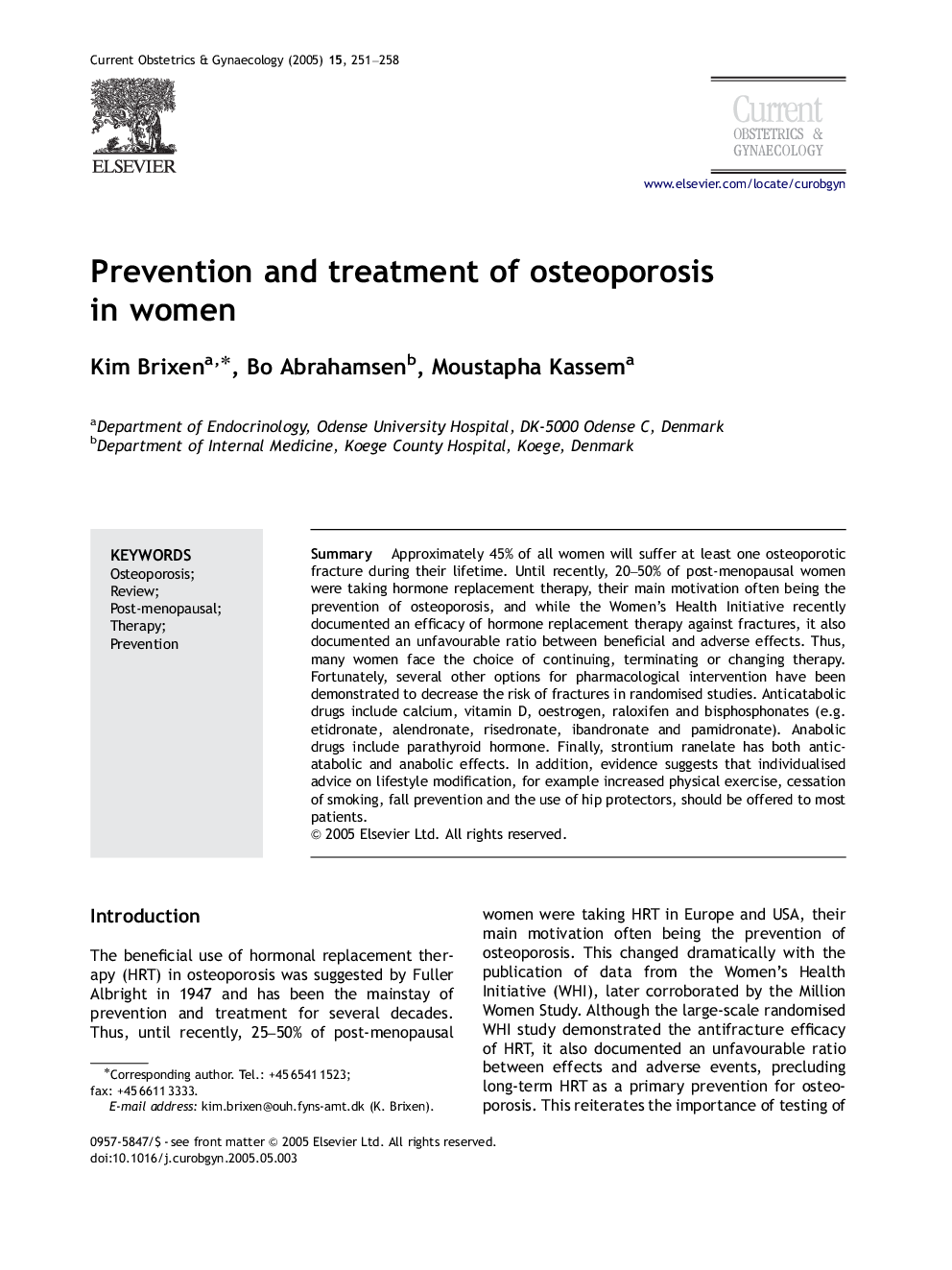| Article ID | Journal | Published Year | Pages | File Type |
|---|---|---|---|---|
| 9318249 | Current Obstetrics & Gynaecology | 2005 | 8 Pages |
Abstract
Approximately 45% of all women will suffer at least one osteoporotic fracture during their lifetime. Until recently, 20-50% of post-menopausal women were taking hormone replacement therapy, their main motivation often being the prevention of osteoporosis, and while the Women's Health Initiative recently documented an efficacy of hormone replacement therapy against fractures, it also documented an unfavourable ratio between beneficial and adverse effects. Thus, many women face the choice of continuing, terminating or changing therapy. Fortunately, several other options for pharmacological intervention have been demonstrated to decrease the risk of fractures in randomised studies. Anticatabolic drugs include calcium, vitamin D, oestrogen, raloxifen and bisphosphonates (e.g. etidronate, alendronate, risedronate, ibandronate and pamidronate). Anabolic drugs include parathyroid hormone. Finally, strontium ranelate has both anticatabolic and anabolic effects. In addition, evidence suggests that individualised advice on lifestyle modification, for example increased physical exercise, cessation of smoking, fall prevention and the use of hip protectors, should be offered to most patients.
Related Topics
Health Sciences
Medicine and Dentistry
Obstetrics, Gynecology and Women's Health
Authors
Kim Brixen, Bo Abrahamsen, Moustapha Kassem,
